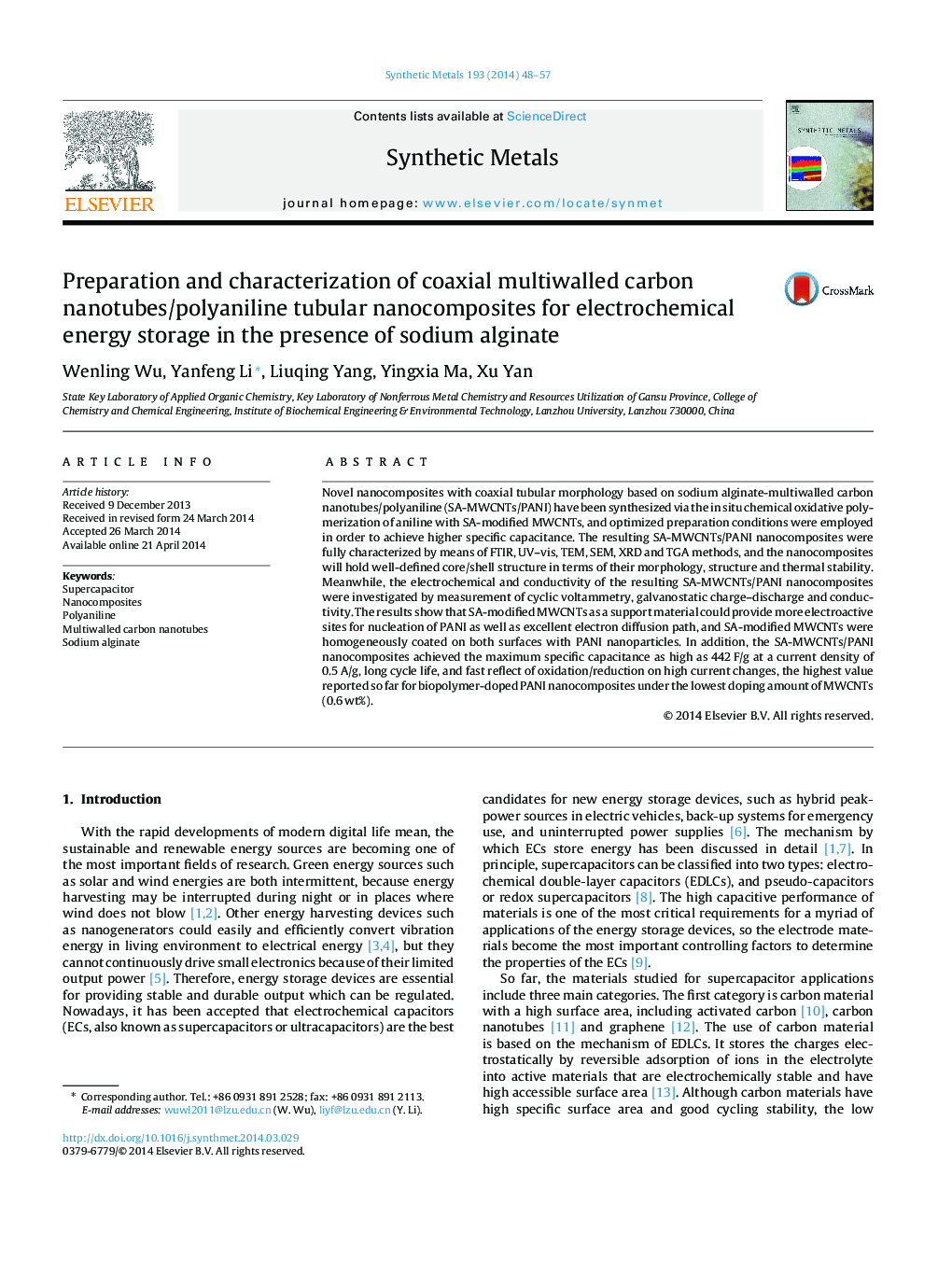| Article ID | Journal | Published Year | Pages | File Type |
|---|---|---|---|---|
| 1440977 | Synthetic Metals | 2014 | 10 Pages |
•The sodium alginate-multiwalled carbon nanotubes/polyaniline was firstly synthesized.•Novel nanocomposites have coaxial tubular morphology.•SA-modified MWCNTs as a support material could provide more electroactive sites.•The maximum specific capacitance as high as 442 F/g was achieved.•Only 0.6 wt% MWCNTs, the lowest doping amount, have the maximum specific capacitance.
Novel nanocomposites with coaxial tubular morphology based on sodium alginate-multiwalled carbon nanotubes/polyaniline (SA-MWCNTs/PANI) have been synthesized via the in situ chemical oxidative polymerization of aniline with SA-modified MWCNTs, and optimized preparation conditions were employed in order to achieve higher specific capacitance. The resulting SA-MWCNTs/PANI nanocomposites were fully characterized by means of FTIR, UV–vis, TEM, SEM, XRD and TGA methods, and the nanocomposites will hold well-defined core/shell structure in terms of their morphology, structure and thermal stability. Meanwhile, the electrochemical and conductivity of the resulting SA-MWCNTs/PANI nanocomposites were investigated by measurement of cyclic voltammetry, galvanostatic charge–discharge and conductivity. The results show that SA-modified MWCNTs as a support material could provide more electroactive sites for nucleation of PANI as well as excellent electron diffusion path, and SA-modified MWCNTs were homogeneously coated on both surfaces with PANI nanoparticles. In addition, the SA-MWCNTs/PANI nanocomposites achieved the maximum specific capacitance as high as 442 F/g at a current density of 0.5 A/g, long cycle life, and fast reflect of oxidation/reduction on high current changes, the highest value reported so far for biopolymer-doped PANI nanocomposites under the lowest doping amount of MWCNTs (0.6 wt%).
